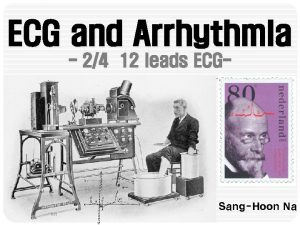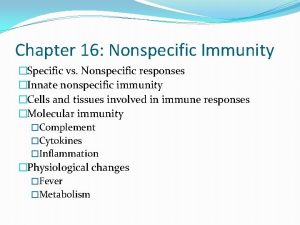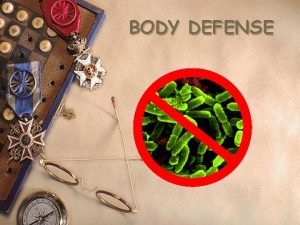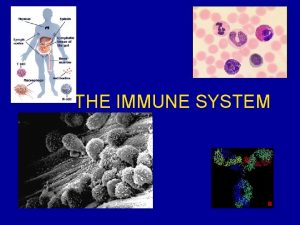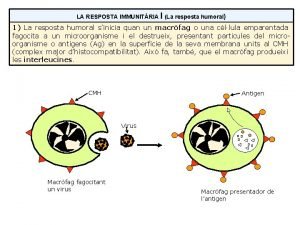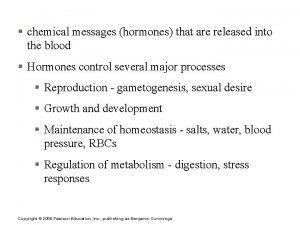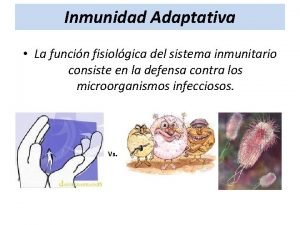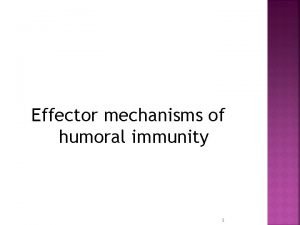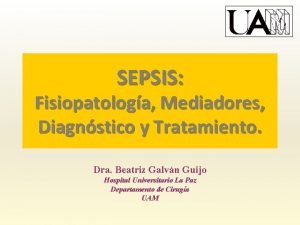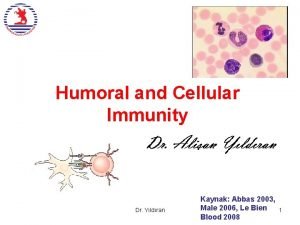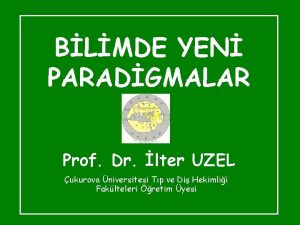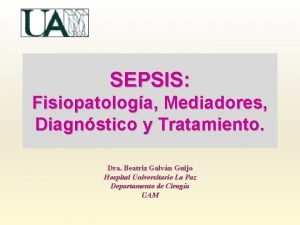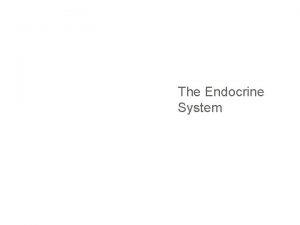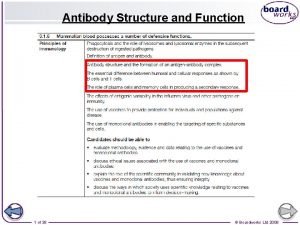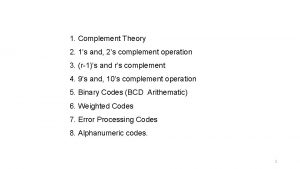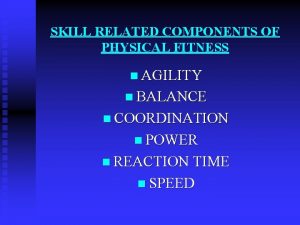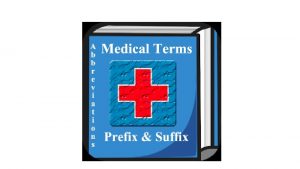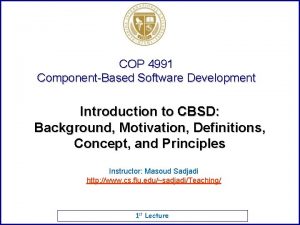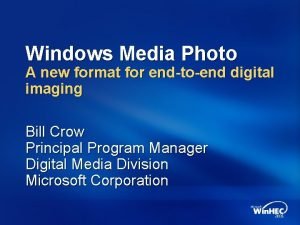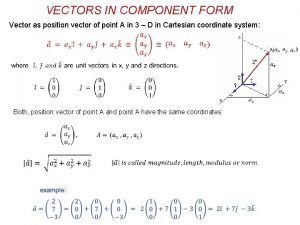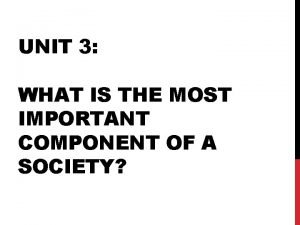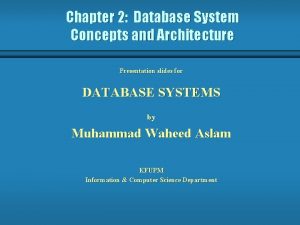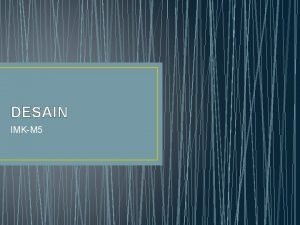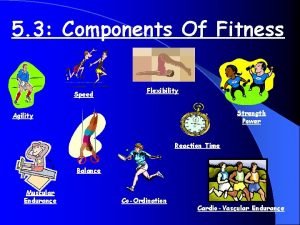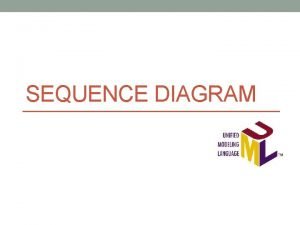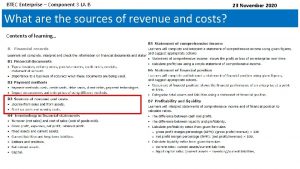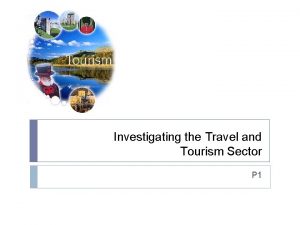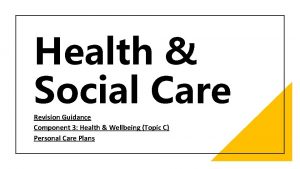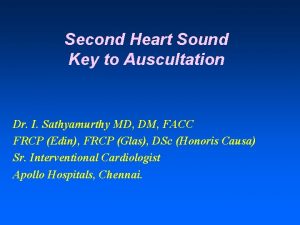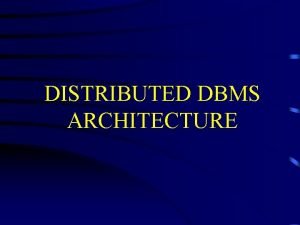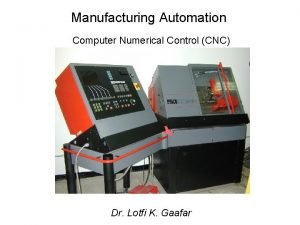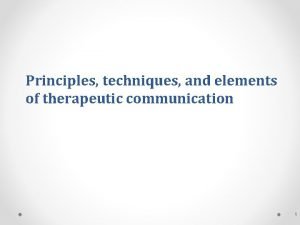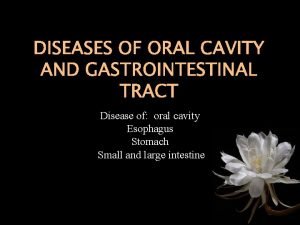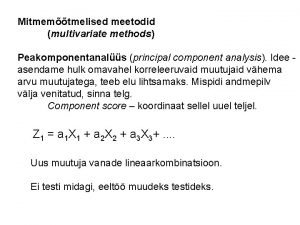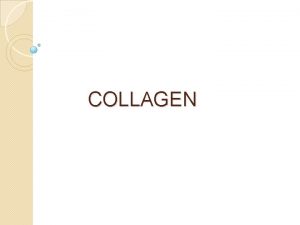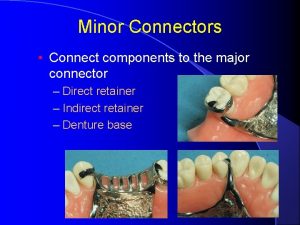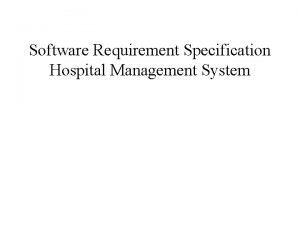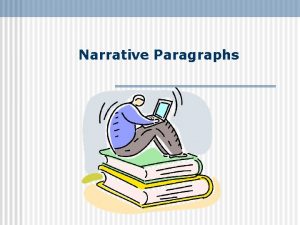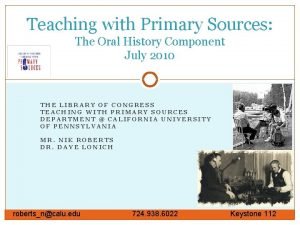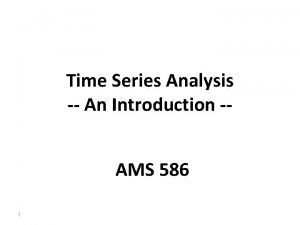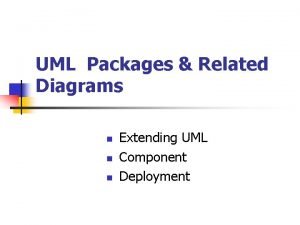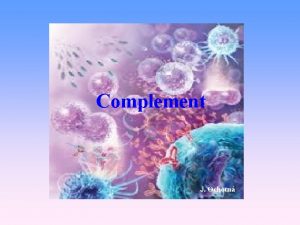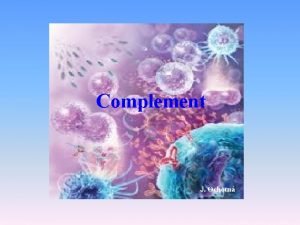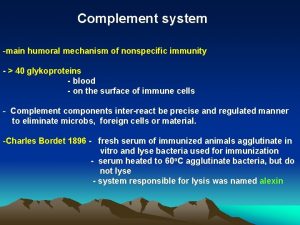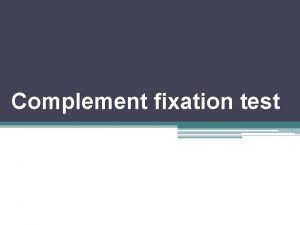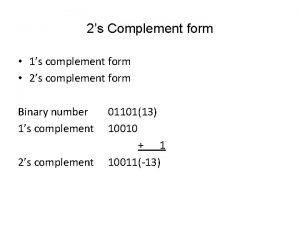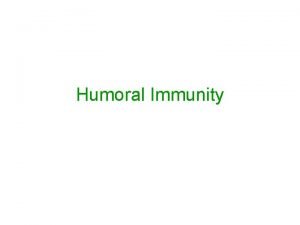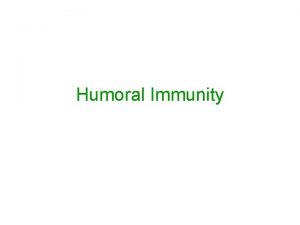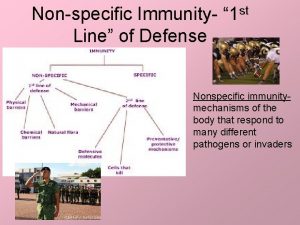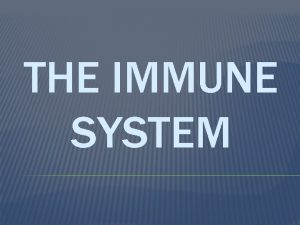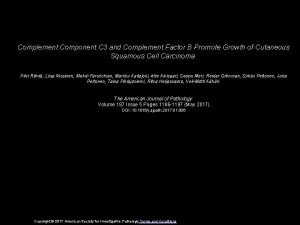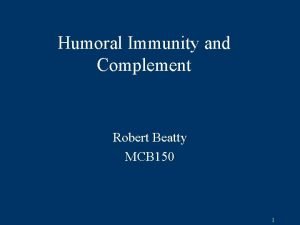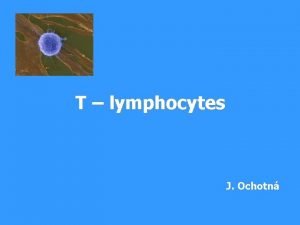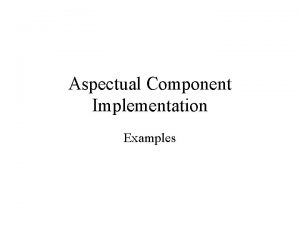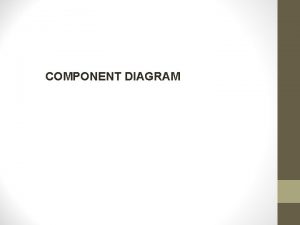Complement J Ochotn Complement humoral component of nonspecific

























































- Slides: 57

Complement J. Ochotná

Complement humoral component of nonspecific immunity helps remove microorganisms and own altered cells (apoptotic cells) complement proteins are synthesized in the liver, less by tissue macrophages and fibroblasts

Complement system of about 30 serum and membrane proteins complement components are present in serum in inactive form complement activation has cascade character

Pathways of complement activation • Classical pathway • Alternative pathway • Lectin pathway Riedem ann N. C.

Pathways of complement activation https: //www. youtube. com/watch? v=qga 3 Wn 76 d 9 w https: //www. youtube. com/watch? v=vb. WYz 9 XDt. Lw https: //www. youtube. com/watch? v=ut. Qd. PPee. TL Q

Classical complement pathway can be initiated by antibodies Ig. G ( not by Ig. G 4) and Ig. M or by pentraxins (CRP, SAP - acute phase proteins) after binding of antibodies to the bacteria surface, Ab changes its conformation and than can bind C 1 protein

Classical complement pathway can be initiated by antibodies Ig. G ( not by Ig. G 4) and Ig. M or by pentraxins (CRP, SAP - acute phase proteins) after binding of antibodies to the bacteria surface, Ab changes its conformation and than can bind C 1 protein

Alternative complement pathway C 3 component of complement rarely spontaneously breaks into C 3 b and C 3 a C 3 b can covalently bind on the surface of a particle (own cell, microorganism) or reacts with water, thereby inactivates

Lectin complement pathway is initiated by serum mannose binding lectin (MBL) MBL binds to mannose residues on the surface of some microbes, after this binding starts cleave C 4 and C 2 this way is similar to the classical pathway

Biological significance of complement Opsonization (C 3 b, C 4 b) Chemotaxis (C 3 a, C 5 a) Osmotic lysis (MAC C 5 b-C 9) Anaphylatoxins (C 3 a, C 4 a, C 5 a)

Classical and alternative pathway

Complement activation and efector functions

Complement regulation and protection of own cells Activation of complement cascade is controlled by the plasma and membrane inhibitors. Anaphylatoxin inactivator MCP DAF Protectin

Complement regulation C 1 inhibitor (C 1 -INH) – inhibits C 1; if missing→ HAE factor I with cofactors: MCP (membrane cofactor protein), CR 1, factor H – C 3 b, C 4 b cleavage DAF (decay-accelerating protein)-degradation of C 3 and C 5 convertase

Complement regulation factor S (vitronectin) – inhibits complex C 5 b. C 6 CD 59 (protectin) - prevents the polymerization of C 9 anaphylatoxin inactivator (CPN)- inactivates anafylatoxins (C 3 a, C 4 a, C 5 a)

Complement receptors Bind fragments of complement components CR 1 - on various cells - promotes C 3 b, C 4 b decay - stimulate phagocytosis - erythrocyte transport of immunecomplexes CR 2 - on B lymphocytes and FDC - activation of B cells

Complement receptors CR 3, CR 4 - on phagocytes - participation in opsonization, adhesion Anaphylatoxin receptors C 3 a. R, C 5 a. R – receptors for anaphylatoxins - mast cell activation



Basophils and mast cells and their importance in immune responses

Mast cells Mucosal mast cells - in the mucous membranes of respiratory and gastrointestinal tract, produce histamine, serotonin, heparin, tryptase, leukotriene C 4. . . , participate in parasitosis and allergy Connective tissue mast cells – in parasitosis and allergy are not participating

Mast cell functions Defense against parasitic infections In pathological circumstances, responsible for the early type of hypersensitivity (immunopathological reaction type I) Apply during inflammation, in angiogenesis, in tissue remodeling

Mast cell activation Mast cells can be stimulated to degranulate by: cross-linking of Ig. E receptors (Fc RI) anafylatoxins (C 3 a, C 4 a, C 5 a) TLR

Mast cell activation by cross-linking of Ig. E Fc receptors Binding of Ig. E to highaffinnity Fc receptor for Ig. E (Fc RI) Binding of multivalent antigen (multicellular parasite) to Ig. E Aggregation of several molecules of Fc RI

Mast cell activation Mast cell degranulate (cytoplasmic granules mergers with the surface membrane and release their contents) Activation of arachidonic acid metabolism (leukotriene C 4, prostaglandin D 2) Start of cytokines production (TNF, TGF , IL-4, 5, 6. . . )

Secretory products of mast cells Cytoplasmatic granules: hydrolytic enzymes, histamine, heparin, chondroitin sulphate, serotonin Histamine - vasodilation, ↑ vascular permeability (erythema, edema, itching), bronchoconstriction, ↑ intestinal peristalsis, ↑mucus secretion in the respiratory tract and GIT (helps eliminate the parasite) Arachidonic acid metabolites (leukotriene C 4, prostaglandin D 2) Cytokines (TNF, TGF , IL-4, 5, 6. . . )

Basophils Differentiate from myeloid precursor Receptor equipment, content of granules, the mechanisms of stimulation and functions are very similar to mast cells Play a role in parasitic infections and allergies Basophil activation markers: CD 63, (CD 203)

Immune mechanisms of inflammation (Local and systemic reactions)

Inflammation Is a protective physiological response leading to protection against infection in damaged sites, localization of damage, elimination of necrotic cells and tissue repair.

Local body's response to inflammation Classical signs - pain (dolor), fever (calor), redness (rubor), swelling (tumor)

Inflammation • The first signals for the development of inflammatory response come from mast cells, phagocytes, and the substances released from damaged cells and components of extracellular matrix. • With longer duration of local inflammation are activated an antigen-specific mechanisms (T and B lymphocytes).

Inflammation

Inflammation – local reaction • vasodilation, ↑ vascular permeability (histamine, serotonin, bradykinin, complement components C 3 a, C 5 a, leukotrienes , prostaglandins, …) → rednes, swelling • ↑expression of adhesion molecules on endothelia (TNF , IL-1) → leukocyte adhesion to the endothelium • influence of local nerve endings via prostaglandins → pain • Increased local temperature (IL-1, IL-6, TNF, prostaglandins)

Inflammation - systemic reaction • Leukocytosis • Fever (TNF, IL-1, IL-6, IFN ↑ tissue metabolism ↑ mobility of leukocytes ↑ formation of IFN, cytokines, Ig ↑ expression of Hsp • Acute phase proteins (IL-6, TNF , IL-1) CRP, SAP - opsonization and complement activation

Inflammation - systemic reaction • Septic shock - the massive penetration of microorganisms into the bloodstream (TNF) • Anaphylactic shock - basophil and mast cells activation with allergen (histamine)

Tissue repair • elimination of damaged cells with phagocytes • activation of fibroplastic mechanisms • activation of angiogenesis • regeneration and tissue remodeling • TGF

Antigens

Antigen (immunogen) substance which provokes specific immune response usually proteins or polysaccharides (lipids and nucleic acids only in the combination with proteins or polysaccharides) molecules > 5 k. Da (optimal size of the antigen molecules is about 40 k. Da)

Hapten small molecules, that are able to induce specific immune response only after the attachment to the macromolecular carrier separate haptens are not immunogenic typically drugs (eg penicillin antibiotics, hydralazin)

Epitope (antigenic determinant) part of the antigen which is recognized by immune system (lymphocytes- BCR, TCR, Ig) cross-reactive antigens - share one or more identical or similar epitopes

Interaction antigen – antibody Binding site of antibody (paratop) form non-covalent complexes with the corresponding part on antigen molecule (epitope) participation: the hydrogen bonds, electrostatic and hydrophobic interactions, van der Waals forces antigen-antibody complex is reversible

Antigen endogenous antigens - autoantigens (self Ag) exogenous antigens - foreign substances from the environment allergen is exoantigen that in the susceptible individuals can cause pathological (allergic) immune response

Properties of antigen immunogenicity proteins> carbohydrates> macromolecule complexes (glycoproteins, nucleoproteins, and glycolipids)> lipids specificity

Factors affecting immunogenicity Physical: solubility - insoluble Ag more immunogenic molecular weight - ideal 5 -40 k. Da Chemical: structure - the number of determinants degradability - "ease" of uncovering the determinants in antigen presenting cells (APC cell) Biological: biological heterogeneity genetic and physiological disposition of the body

Degree of foreignness Autogeneic - antigens of the same individual Syngeneic - antigens of genetically identical individuals (eg twins) Allogeneic (alloantigens) - antigens genetically different individuals of the same species Xenogeneic (heterologous) - antigens derived from individuals of different species (eg monkey kidney transplant man)

Types of antigens according to antigen presentation T- dependent antigens T- independent antigens

Thymus dependent antigens more frequently, mostly protein Ag for specific humoral immune response to antigen is necessary assistance of TH lymphocytes (or response isn´t enough effective) assistance implemented in the form of cytokines produced by TH lymphocytes

T- independent antigens can stimulate B cells directly mainly bacterial polysaccharides, lipopolysaccharides and polymer forms of proteins (e. g. Haemophilus, Str. pneumoniae)

T-independent pathway

Superantigens stimulate T cells polyclonaly and massively (massive cytokine release) massive activation of T cells can cause shock e. g. bacterial toxins (Staph. aureus, Str. pyogenes, Pseud. aeruginosa)

Superantigens • Proteins (microbial products) which have 2 binding sites, one interacts with the epitope presented on all MHCgp. II, second interacts with other structures presented in many different TCR molecules (connection of T lymphocyte with APC)

Differcence between antigen and superantigen binding

Sequestered antigens autoantigens, that are normally hidden to immune system and therefore unknow (e. g. brain, the lens of the eye , testes) if they are "uncovered" by demage, exposed to the immune system, are recognized as foreign (one of theories of autoimmune processes)

Immunologically privileged sites brain, eye, gonads are protected from potentially damaging inflammatory immune responses this tissues are far less rejected in allogeneic transplant (cornea) this privileged position is not absolute

Immunologically privileged sites Mechanisms of protection from the immune system: isolation from the immune system (blood-brain barrier) preferences of Th 2 and suppression of Th 1 -response production of immunosuppressive cytokines (TGFβ) Fas. L expression -active protection against effector T-lymphocytes increased expression of membrane complement inhibitors

Thank you for your attention

• Complement – clasical pathway https: //www. youtube. com/watch? v=vb. WYz 9 XDt. Lw • Complement – alternative pathway https: //www. youtube. com/watch? v=qga 3 Wn 76 d 9 w • Mast cells https: //www. youtube. com/watch? v=Mo. M 5 JY_Ee. Ro • Acute inflammation https: //www. youtube. com/watch? v=su. CKm 97 yvyk
 Short pr interval
Short pr interval Specific vs nonspecific immunity
Specific vs nonspecific immunity Nonspecific host defense mechanism
Nonspecific host defense mechanism Specific vs nonspecific defense
Specific vs nonspecific defense схема імунної відповіді
схема імунної відповіді Abnormal vq scan images
Abnormal vq scan images Specific defense vs nonspecific defense
Specific defense vs nonspecific defense Resposta humoral
Resposta humoral Hormonal stimulus
Hormonal stimulus La respuesta
La respuesta Inmunidad
Inmunidad Effector mechanism of humoral immunity
Effector mechanism of humoral immunity Respuesta adaptativa humoral
Respuesta adaptativa humoral Abbas
Abbas Humoral neural and hormonal stimuli
Humoral neural and hormonal stimuli Humoral patoloji paradigması
Humoral patoloji paradigması Pmn
Pmn Figure of endocrine system
Figure of endocrine system Humoral and cell mediated immunity difference
Humoral and cell mediated immunity difference 1s and 2s complement
1s and 2s complement Venn diagram symbols n
Venn diagram symbols n Agility skill-related fitness
Agility skill-related fitness Simplifying nonperfect roots quizlet
Simplifying nonperfect roots quizlet Rpd stress breaker
Rpd stress breaker Soilless media components
Soilless media components Component-based software engineering example
Component-based software engineering example Windows imaging component
Windows imaging component Component form vectors
Component form vectors The most important component
The most important component Database system concepts slides
Database system concepts slides Empat komponen dasar pembentuk user interface adalah
Empat komponen dasar pembentuk user interface adalah Angle of pull pdf
Angle of pull pdf Dc component
Dc component Example of balance in sports
Example of balance in sports Tujuan sequence diagram
Tujuan sequence diagram National board component 2 examples
National board component 2 examples Enterprise component 3
Enterprise component 3 Travel and tourism component industries
Travel and tourism component industries What are the components of history taking
What are the components of history taking What is cognitive component of attitude
What is cognitive component of attitude Component 3 health and wellbeing
Component 3 health and wellbeing Fixed splitting of s2
Fixed splitting of s2 Components of ddbms
Components of ddbms Mechanical component
Mechanical component Principles of therapeutic communication
Principles of therapeutic communication Sialedinitis
Sialedinitis Principal component analysis
Principal component analysis Collagen is a major component of
Collagen is a major component of Minor connector denture
Minor connector denture Level 2 dfd for hospital management system
Level 2 dfd for hospital management system Topic sentence in narrative paragraph
Topic sentence in narrative paragraph Oral history component
Oral history component Components of time series
Components of time series Component diagram example
Component diagram example Component of health assessment
Component of health assessment Turn construction
Turn construction Types of direct retainers in rpd
Types of direct retainers in rpd Spoken language features
Spoken language features
